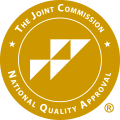Self-injury, also called “self-injury,” “self-mutilation,” or simply “cutting,” refers to a variety of behaviors that involve inflicting deliberate harm on oneself that is not usually meant to be a suicidal act.
More About Self-Injury
Learn More About Self-Harm
While some people may unintentionally hurt themselves badly enough to cause death, most people who self-injure do so for other reasons. There are a lot of myths about self-injury, most notably that people who self-injure do so as a means to get attention from other people. This is not usually the case. On the contrary, people who self-injure often do so shrouded in shame and guilt, keeping their secret at all costs.
Generally, it’s believed that self-injury is the result of a person’s inability to use healthy coping strategies when faced with issues of personal identity and finding his or her place in society. There are a lot of reasons why people self-injure and the mixture of emotions that may trigger self-injury are very complicated. Some engage in cutting to cope with emotional pain and distress, especially feelings of self-hatred, worthlessness, loneliness, panic, rejection, confused sexuality, guilt, and sadness. It can be very confusing for someone who does not engage in self-injury to understand this behavior. Through engaging in self-harm, a person may be trying to:
- Provide a distraction from distressing emotions through physical pain
- Feel a needed sense of control over his or her body, feelings, and/or life circumstances
- Punish him or herself for perceived faults
- Externally express internal emotions
- Manage and reduce extreme anxiety and distress
- Feel anything – even physical pain – when he or she feels empty inside
- Communicate depression and other symptoms of mental illness to the external world
Most carry this burden in secrecy, hiding their self-mutilation behind locked doors, deeply ashamed of their behaviors. Self-injury may help some people cope with their problems, but unfortunately the relief they experience is short-lived. While living with self-injury can make those who engage in this activity feel trapped, with the proper amounts of therapy, medication, and self-care, most people who engage in self-injury are able to recover.
Statistics
Statistics on Self-Injury
As many people who engage in self-injurious behavior tend to keep their habit a secret, the statistics for self-injury are likely skewed. In the United States, each year approximately 2 million cases of self-harm are reported. Most people who cut begin to self-injure in the teen years— 90% of people who engage in this behavior begin during these years. Each year, one in five women and one in seven men engage in some form of self-injury.
What Causes Self-Harm?
Learn About the Causes and Risk Factors for Self-Injury
It’s thought that self-harming behaviors are not the result of one single factor but rather a number of causes and risk factors. The most common causes for self-injury may include the following:
Genetic: Many mental illnesses that can trigger cutting urges, such as borderline personality disorder and depression are thought to have genetic components. People who are born into families that have a history of mental illness are at a greater risk for developing the disorder themselves.
Physical: A great number of mental illnesses lead to imbalances in the levels of certain neurotransmitters in the brain that are involved in emotional regulation. People with these imbalances may self-injure in order to experience any emotions at all. Additionally, physical injury to the body results in a flood of pleasurable chemicals into the body.
Environmental: People who experienced abuse, especially as a child, are at a greater risk for self-injury later in life. These people may not have been able to express their emotions in a healthy way as children and use self-injury as a means to express their overwhelming emotions and cope with the trauma.
Risk Factors:
- Being female
- Being in teens and early 20s – most people who cut themselves often begin as teenagers and young adults
- Having friends who also self-injure
- Unstable personal identity or sexuality
- Mental health disorders
- Drug and alcohol abuse and addiction
Signs of Self-Injury
Signs and Symptoms of Self-Harm
While most people assume that self-injury only includes cutting, there are a wide variety of ways in which people engage in self-harm. This may include burning, drinking poison, preventing wounds from healing, hitting themselves, head banging, hair pulling, stabbing, deliberately engaging in risky behaviors, sticking objects into their skin, and biting themselves. As the methods of self-injury vary so vastly, it can be hard to determine if your loved one is engaging in self-injury.
Common symptoms of self-injury include:
Behavioral symptoms:
- Wearing long pants or long-sleeved shirts in the summer
- Claiming to have frequent “accidents”
- Challenges in interpersonal relationships
- Difficulties maintaining a steady job
- Failure to meet obligations at home, work, or school
- Keeping sharp objects or other implements on oneself at all times
- Withdrawing from social situations and other people
- Spending increasing amounts of time alone
- Unpredictable behaviors
- Impulsive, risky behaviors
- Bloody clothing, towels, or bedding
Physical symptoms:
- Scars from burns or cuts
- Broken bones
- Bruises
- Patches of missing hair
Psychosocial symptoms:
- Emotional numbing
- Worsening emotional wellbeing
- Feeling hopelessness
- Worthlessness
- Helpless feelings
- Emotional instability
- Mood swings
- Depression
- Increasing anxiety, especially when unable to self-injure
- Guilt
- Shame
- Disgust
Effects of Self-Injury
The Effects of Self-Harm
While self-injury is considered a non-suicidal act, the consequences of self-injury can range from minor irritations to extremely serious injury and death. It’s of high importance that people who self-injure seek treatment in an inpatient facility in order to increase safety, develop healthy coping skills, and receive treatment for any mental health disorders.
Long-term complications of self-injury include:
- Social isolation
- Social phobia
- Increased feelings of shame, disgust, guilt
- Poor self-esteem
- Worsening mental health conditions
- Broken bones
- Worsening physical health
- Permanent disfigurement
- Consequences of risky behaviors
- Loss of interpersonal relationships
- Infections
- Septicemia
- Suicide or suicidal behaviors
- Fatal injuries
- Accidental death
Co-Occurring Disorders
Self-Injury and Co-Occurring Disorders
Many people who self-injure suffer from co-occurring mental illnesses. The most common mental illnesses that occur with cutting include the following:
- Depressive disorders
- Anxiety disorders
- Bipolar disorder
- Substance abuse
- Schizophrenia
- Borderline personality disorder
- Personality disorders
- Eating disorders
- Trauma
- PTSD

















